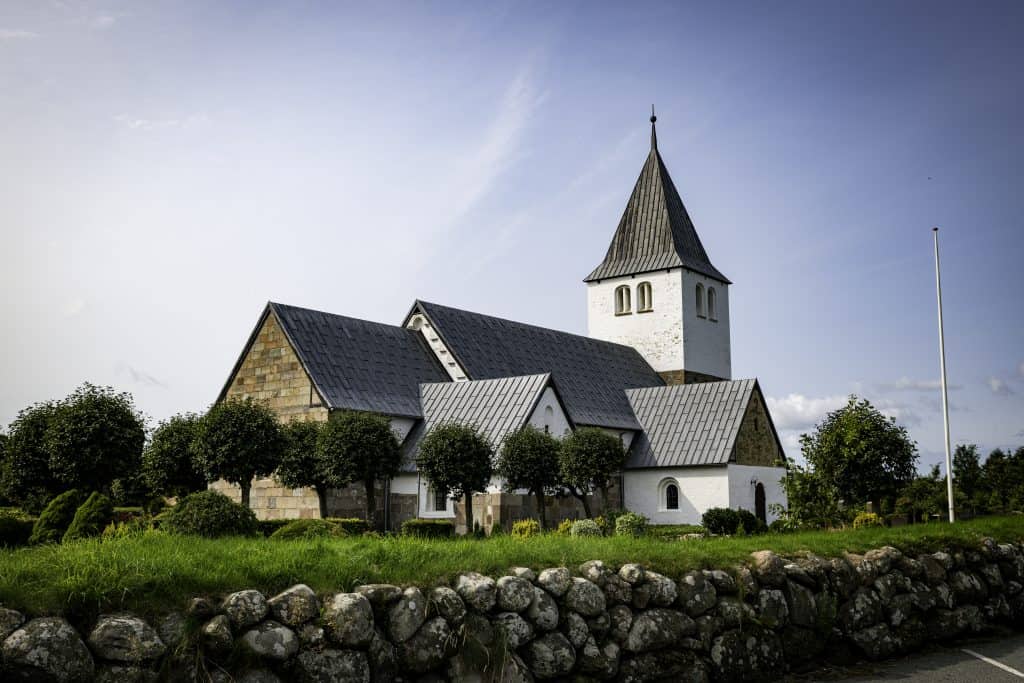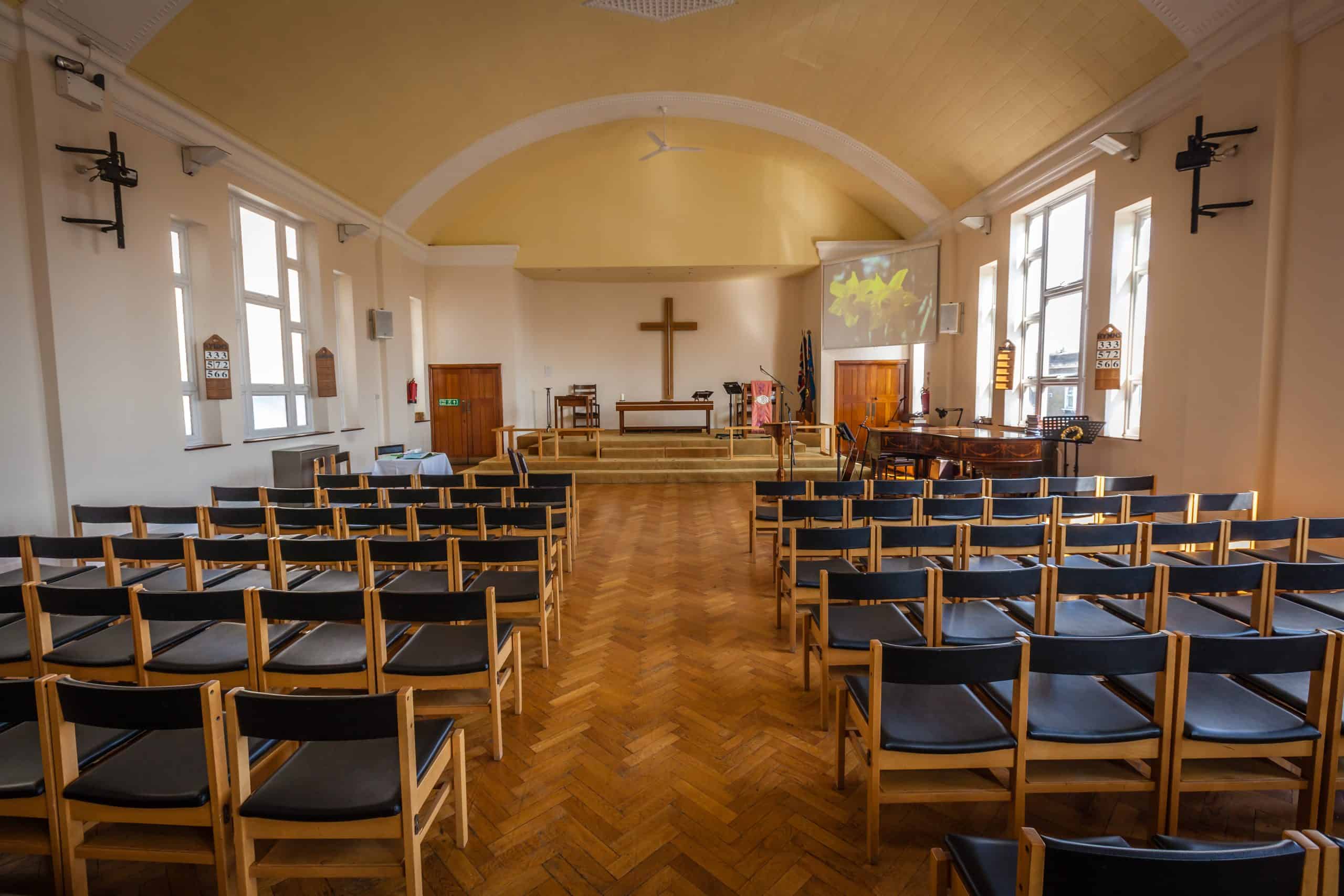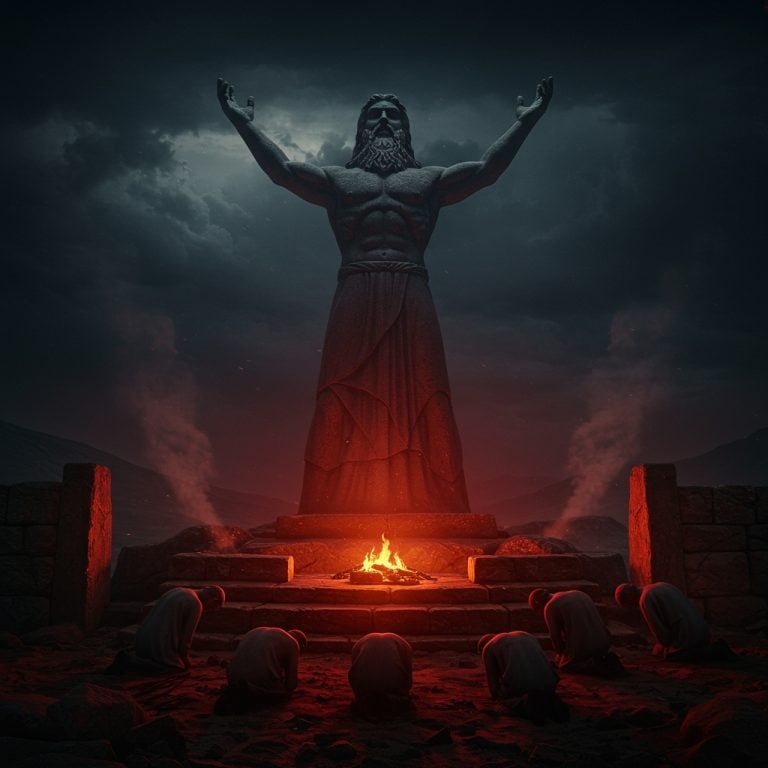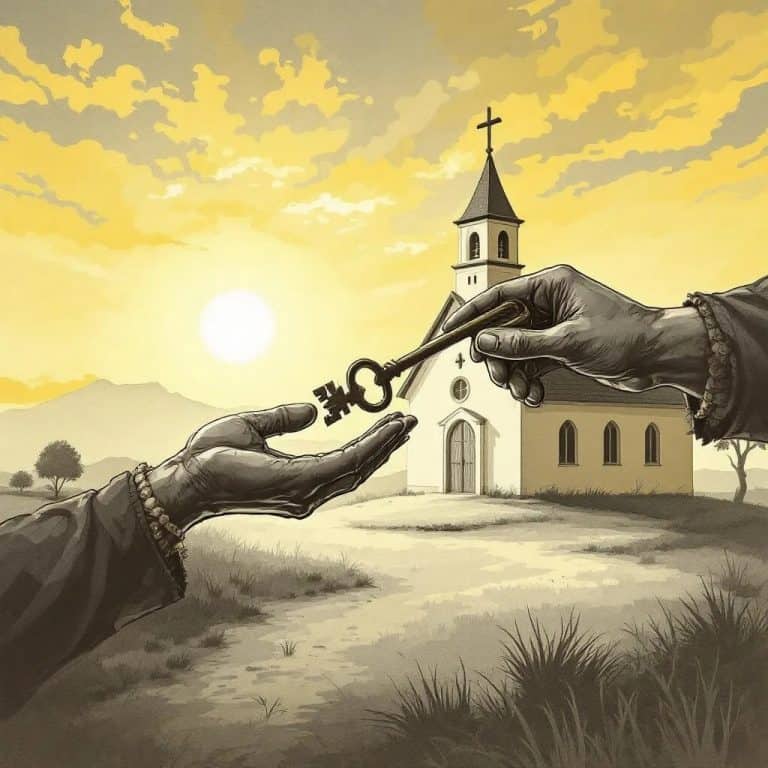What It Means to Be a Traditional Church (and Why It Still Matters)
Walk into a hundred churches across America on Sunday morning, and you’ll see a split. Some gather under stained-glass windows, singing hymns to the sound of an organ. Others meet in repurposed gyms, lights dimmed, lyrics projected, bands on stage. People call the first a traditional church and the second a contemporary church. The assumption is simple: one looks backward, the other looks forward.
But is that really what’s at stake? Or is the conversation about something deeper than carpet colors, instruments, and hymnals?

The truth is, the traditional church is more than a style. It’s an inheritance. And in a time that insists on the new, that inheritance might matter more than ever. I’ve served in churches on both ends of that spectrum—one where the organ hadn’t been tuned in years, another where the band rehearsed under stage lights—and I’ve watched how each shapes the soul of a congregation.
What I Mean by a Traditional Church
The phrase historic worship model can be fuzzy. To some it means hymns, choirs, and robes. To others it means “the way my grandparents did church.” For clarity, let’s define it more carefully.
A traditional church is one that holds to the old patterns of worship, prayer, and teaching that Christians have relied on for centuries:
- Structured liturgy — readings, prayers, confession, creeds, and sacraments.
- Continuity across centuries — a sense that today’s worship is connected to yesterday’s church.
- Theology in practice — doctrine built into repeated forms, not just taught in sermons.
- Seasonal rhythms — Advent, Lent, Pentecost, and other patterns that shape the life of faith.
This doesn’t mean every congregation that uses a hymnal is automatically thriving. Nor does every guitar-led service lack depth. But the church rooted in history deliberately resists constant reinvention. Its compass is continuity, not novelty.
Why Tradition Still Speaks
Stability in a World of Flux
Everything else changes. Social media trends, political winds, entertainment choices—they shift overnight. In contrast, a church rooted in history feels steady. You walk into a service and know what to expect: confession, Scripture, song, sermon, table.
That predictability isn’t dull; it’s grounding. I didn’t realize how much that steadiness mattered until a season when my own worship life felt scattered. Returning to a liturgical rhythm re-centered me more than I expected. It tells you that Christianity isn’t invented each week. It’s received and rehearsed. In an anxious world, that kind of rootedness is a relief.
Theology You Do, Not Just Hear
Here’s the beauty of tradition—you don’t just hear truth, you end up doing it. The songs, the prayers, the table—they stick with you. Singing “Holy, Holy, Holy” teaches the Trinity. Reciting the Apostles’ Creed locks the basics of the faith into memory. Kneeling at the table reminds you that grace is given, not earned. I’ve seen children memorize the Creed before they could read and older saints mouth the same words through tears. Those shared forms preach long after the sermon ends.
It’s not just something you hear—it’s something you practice.
Slow Formation
Liturgical tradition assumes discipleship takes time. It resists the quick fix. Through repetition and rhythm—Advent waiting, Lenten fasting, Easter rejoicing—it shapes patience, reverence, humility.
It pushes back against consumer religion. No instant fixes—just the steady work of following Christ.
Intergenerational Unity
In a traditional church, grandparents and grandchildren speak the same prayers, sing the same hymns, confess the same creed. In a fractured society, that shared vocabulary is a gift. It bridges ages and experiences, reminding us that we belong to one body.
Misconceptions About Historic Worship
“It’s Just for Old People”
That’s the stereotype. But it doesn’t hold. Young Christians disillusioned by shallow novelty are rediscovering ancient practices. For many, liturgy feels refreshing precisely because it offers something older and deeper.
“It’s Out of Touch”
A lot of people think the church has to copy culture to stay relevant. If the music doesn’t sound current, if the look isn’t polished, it must be out of touch. That’s not how it works. But liturgical tradition has always been countercultural. When everything around us demands speed and noise, tradition says, slow down and listen.
That’s not irrelevance. That’s resistance. When I first started writing about worship, I assumed “relevance” meant keeping pace with culture. I was wrong. The deeper I looked, the more I saw how tradition slows us down enough to hear God again.
“It’s Too Rigid”
Ritual can become empty. But ritual can also be freeing. Instead of every worship leader inventing something new, liturgy gives the congregation a shared path. It shifts focus away from performance and toward participation.
Historic Worship vs. Contemporary Church: Meaning and Misconceptions
This is where the debate usually lands: historic versus contemporary. For decades, congregations have fought “worship wars,” splitting over instruments, dress, or music styles.
But style doesn’t tell the whole story. People often search for contemporary church meaning because they want clarity. Some define it as informal dress, modern music, and flexible structure. Others see it as an intentional effort to stay culturally relevant. But definitions vary, and too often the debate reduces both sides to caricatures.
The reality is, a contemporary church may excel at accessibility, creativity, and cultural resonance. A traditional church may excel at depth, continuity, and formation. Both can fail: contemporary worship can drift into shallowness, and worship shaped by centuries can fossilize. Neither is immune to error.
The real question isn’t which style “wins.” It’s whether either approach forms disciples who reflect Christ. If it doesn’t, no style will save us.
Where Historic Worship Struggles
Let’s be fair. The traditional church does face real challenges.
- Accessibility: Visitors may feel lost in rituals they don’t understand.
- Language: Archaic terms confuse if never explained.
- Adaptability: Some churches resist change altogether, confusing fidelity with inflexibility.
These aren’t fatal flaws. They’re correctable. A worshiping community rooted in history doesn’t need to keep 17th-century English to honor tradition. The point is to preserve meaning, not outdated packaging.
What a Healthy Traditional Worshiping Community Looks Like Today
Teaching the “Why”
Don’t assume people know why they kneel, confess, or sing. Explain it. When worshippers grasp the theology behind the form, it deepens engagement.
Using Technology Without Letting It Rule
Streaming services or projecting hymn lyrics doesn’t destroy tradition. Tools aren’t the problem. The issue is whether they serve worship or replace its core.
Reverence with Hospitality
Tradition can feel intimidating. The solution isn’t to strip away reverence but to pair it with warmth. Clear bulletins, friendly greeters, and simple explanations lower barriers without watering down depth.
Living the Church Calendar
Advent, Lent, Pentecost—these aren’t optional add-ons. They shape the life of faith. A church grounded in historic worship resists the flattening effect of consumer schedules.
Case Studies in Tradition Renewed
The Small-Town Parish
Membership was shrinking. Leaders considered going “contemporary.” Instead, they leaned harder into tradition: restored confession, reintroduced hymns, explained liturgy. Families came—not in droves, but steadily—because depth drew them.
The Urban Congregation
Surrounded by trendy churches, they doubled down on daily prayers, weekly Eucharist, and historic creeds. The result? Skeptical millennials showed up, drawn to something older than cultural Christianity.
The Blended Example
They tried separate services—traditional at 9:00, contemporary at 11:00. It divided the church. After painful conversations, they unified around a liturgy shaped by history but left space for both new and old music. Conflict eased because focus shifted back to Christ. I’ve walked through a few of those tense meetings myself—voices raised over music styles that were really about identity. When grace finally won, worship felt lighter, not older.
Tradition Across the Ages
The liturgical tradition didn’t just happen. It grew in steps you can still trace:
- Apostolic Age — Acts 2:42 shows believers devoted to teaching, fellowship, breaking bread, and prayer. Already a rhythm was forming.
- Early Centuries — Creeds like the Apostles’ and Nicene emerged to safeguard orthodoxy. Worship wasn’t invented weekly—it was stabilized around Scripture and confession.
- Medieval and Reformation Eras — Debates reshaped how worship looked, but continuity remained: Word, Table, prayer, song.
- Modern Period — Cultural upheaval fractured the picture. Worship wars arose not because tradition failed but because culture shifted faster than the church could process.
Look at it this way: the traditional church isn’t about personal preference. It’s what you get when generation after generation keeps handing down the faith and shaping it into something you can still stand on today.
Why Tradition Speaks to Our Cultural Moment
We live in a time of profound disconnection. People relocate often, families fracture, communities disperse, and digital life leaves many feeling rootless. A church grounded in liturgical tradition pushes back. It reminds you—you’re part of something larger than you.
Sociologists warn that “belonging deficits” fuel modern anxiety and isolation. Tradition answers that deficit, not by offering spectacle but by offering stability. It reminds you that you’re not the center—you’re part of something tested and enduring.
A Global Perspective
The debate about traditional versus contemporary is mostly Western. In Africa, Asia, and the Middle East, churches steeped in historic worship are growing rapidly. They are not shrinking relics but vibrant centers of faith.
In many places, believers want what those ancient practices give—roots, reverence, and depth. To reduce the conversation to style misses this global reality. The future of Christianity worldwide looks far more traditional than many assume.
Biblical Roots of Tradition
The New Testament itself reflects patterns of worship that sound familiar. Early believers gathered for Scripture, prayer, hymns, and the Lord’s Supper (Acts 2:42; Col. 3:16). Paul tells the Corinthians he is passing on what he received (1 Cor. 11:23).
That’s tradition at work—faith passed down, not made up new every time. The traditional church stands in that line, linking us with the apostles and saints before us.
What the Contemporary Church Can Teach
Let’s be honest—the traditional church doesn’t have it all figured out. It has blind spots like any other. That’s where the contemporary side can press us in good ways. People argue about the contemporary church meaning, but some of its strengths are obvious: it opens doors, it tries new things, and it pays attention to the world outside its walls.
When a church rooted in history is willing to learn from that—without trading away its foundation—it usually comes out stronger. The point isn’t to copy trends. The point is to take what’s helpful and let it sharpen us, while keeping our feet planted in the story we’ve inherited.
Why Historic Worship Still Matters
Strip away stereotypes, and what’s left is straightforward:
- A community rooted, not restless.
- A rhythm that builds patience and humility.
- A theology you end up singing, praying, and living out.
- A countercultural witness that truth is received, not invented.
That’s not nostalgia. That’s staying steady when the ground shifts.
Anchored Yet Alive
The traditional church isn’t a relic of the past, nor a barrier to progress. At its best, it is a living reminder that the Christian faith is not about chasing novelty but about being anchored in something older and bigger than us.
And maybe that’s exactly what our fractured, distracted world needs most. The longer I’ve served in and written about the church, the more convinced I am that stability isn’t stagnation—it’s discipleship at work in slow motion.
Walt Roderick is a Christian writer who cares more about biblical clarity than online applause. He writes to strengthen believers and confront spiritual drift.






